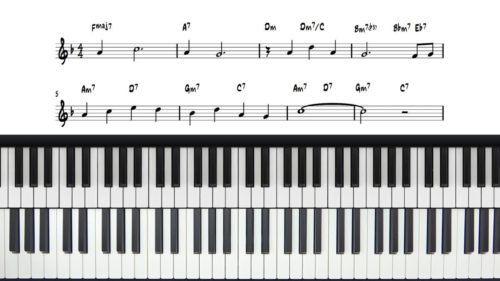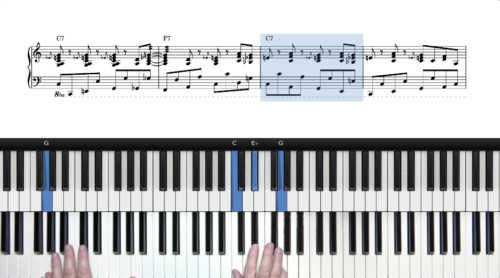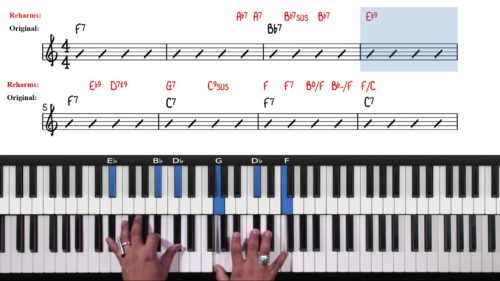Leading Tones & Walkups
In this lesson we smoothen out the transitions between the I, IV, and V chords by applying chromatic passing chords, walk-ups, and by utilising leading tones such as the #5 alteration.
Leading Tones In Blues
We start by exploring the concept of leading tones, in particular using the #5 alteration which creates strong voice leading into the third of the subsequent chord.
We apply the #5 leading tone to the transition between the I and the IV chords, and we also apply this alteration to the V7 passing chord in the 3rd bar which creates a strong pull back to the I7 chord in bar 4.
12 Bar Blues Passing Chords
We can approach any chord in the blues by a dominant chord a half step up and this technique is particularly effect to smoothen out the transitions between the I, IV and V chords.
We apply a B7 passing chord to chromatically approach the Bb7 chord and in the upcoming lessons we add chord alterations to the passing chords which creates more tension and a stronger sense of resolution.
12 Bar Blues Walk Ups
We explore a walk-up sequence from the I chord to the IV chord. Walk ups are usually a mixture of step-wise and chromatic movement in the bass line which is enhanced with voicings in our right hand.
When moving from the I chord to the IV chord, we play F7, G-7, Abdim7, and F7/A which creates a chromatic walk up phrase that leads smoothly into the IV chord in bar 5. We also apply a walk down sequence to chromatically approach the V7 chord and the I chord towards the end of the blues form.
By applying the techniques in this lessons, you’ll notice a significant improvement in your ability to transition seamlessly between the I, IV, and V chords, enhancing your sound when playing the 12 bar blues.
Lesson Downloads
-
Leading Tones, Walk-Ups & Walk-Downs File Type: pdf
Practice Tips
-
Ensure that you have built strong foundation by completing the more basic drills outlined in the previous lessons.
-
Start with a slow tempo and slowly increase the tempo. Remember that if we can't play something slowly in control, we can't play it fast and in control!
-
Divide the 12-bar structure into smaller sections and work on practicing each part independently. Once comfortable, add everything together.







